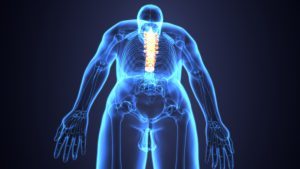What really is sciatica and why do you have it?
Sciatica refers to the pain that you feel when the sciatic nerve is inflamed and/or there is a problem with that nerve. The sciatic nerve is the largest nerve in the body. It comes from the spine and more specifically the lower back and makes its way down the back of the leg. Below are 5 common reasons why someone may have pain coming from this region.
- Disc herniation/bulge
The disc is the cushion between each segment of the spine. Injury to the disc can happen suddenly or even over time. As we age the disc loses its ability to flex and becomes more rigid. This increases the chance of the disc rupturing material out causing a herniation. This can occur from something as simple as bending over to pick up a pencil or a traumatic injury. When this happens, the herniation or bulge can put pressure on the nerve. In this case the sciatic nerve. This can cause pain in the lower back, butt, thigh, back of the leg, and even the feet.
- Tight muscles AKA piriformis syndrome
The sciatic nerve passes by different muscles and even in rare cases, through the muscle. One muscle is called the piriformis muscle. When the piriformis muscle is tight, the sciatic nerve may be impinged and/or inflamed. This can cause pain in the butt, thigh, leg, and feet. When this happens, you may or may not have low back pain associated with it. Generally, the pain stops before going beyond the knee
- Short leg and abnormal posture
Around 90% of the population has an anatomical short leg. When this happens, it leads to an imbalance in the posture and spine – just like how the leaning tower of Pisa is slanted because the foundation is off. This can lead to one side being tighter than the other, causing pressure on the muscles, joints, and even the nerves. This imbalance can cause sciatic pain. Also, people have different postures such as a swayback (when people lean backward), scoliosis, and even shifts to the right or left side. This will cause the same issue due to mechanical imbalance.
- Reversed lumbar (low back) curve
The lumbar spine (low back) is supposed to have a curve to it. People that have decreased curve have an increased chance of having low back pain due to poor and improper biomechanics (the way we move) as well as increased tension placed onto the joints, disc, and nerves due to the abnormal curve.
- Forward head position AKA text neck
When the head shifts forward, it causes the muscles in the lower back to stiffen to hold the head. It is like when you hold a bowling ball out in front of you. It is much harder to hold it further away from you than close to your body. Also, when the neck goes forward, it causes all the nerves in the spine to tighten up. This tension will have a domino effect and eventually reach the low back where it can even affect the sciatic nerve.
